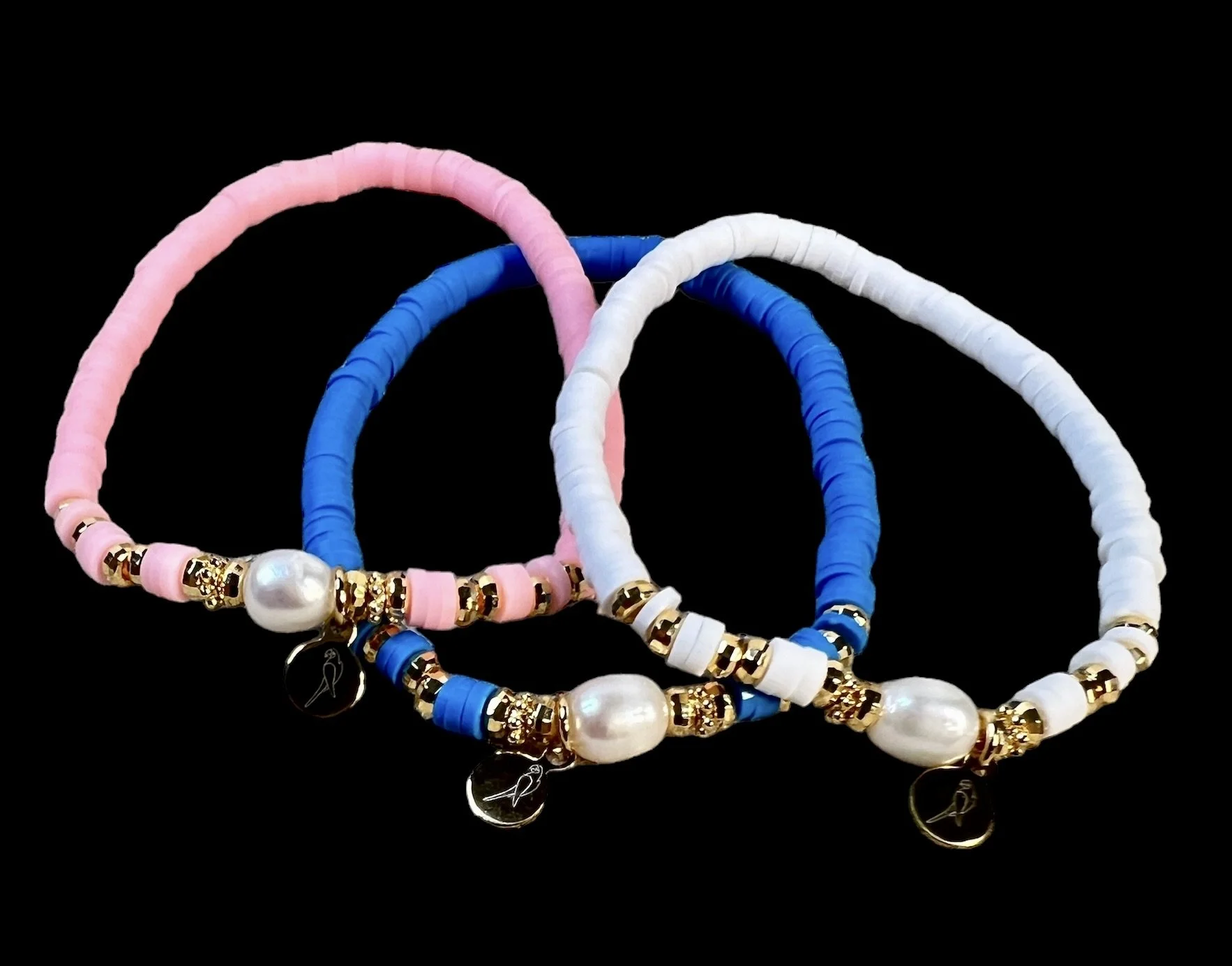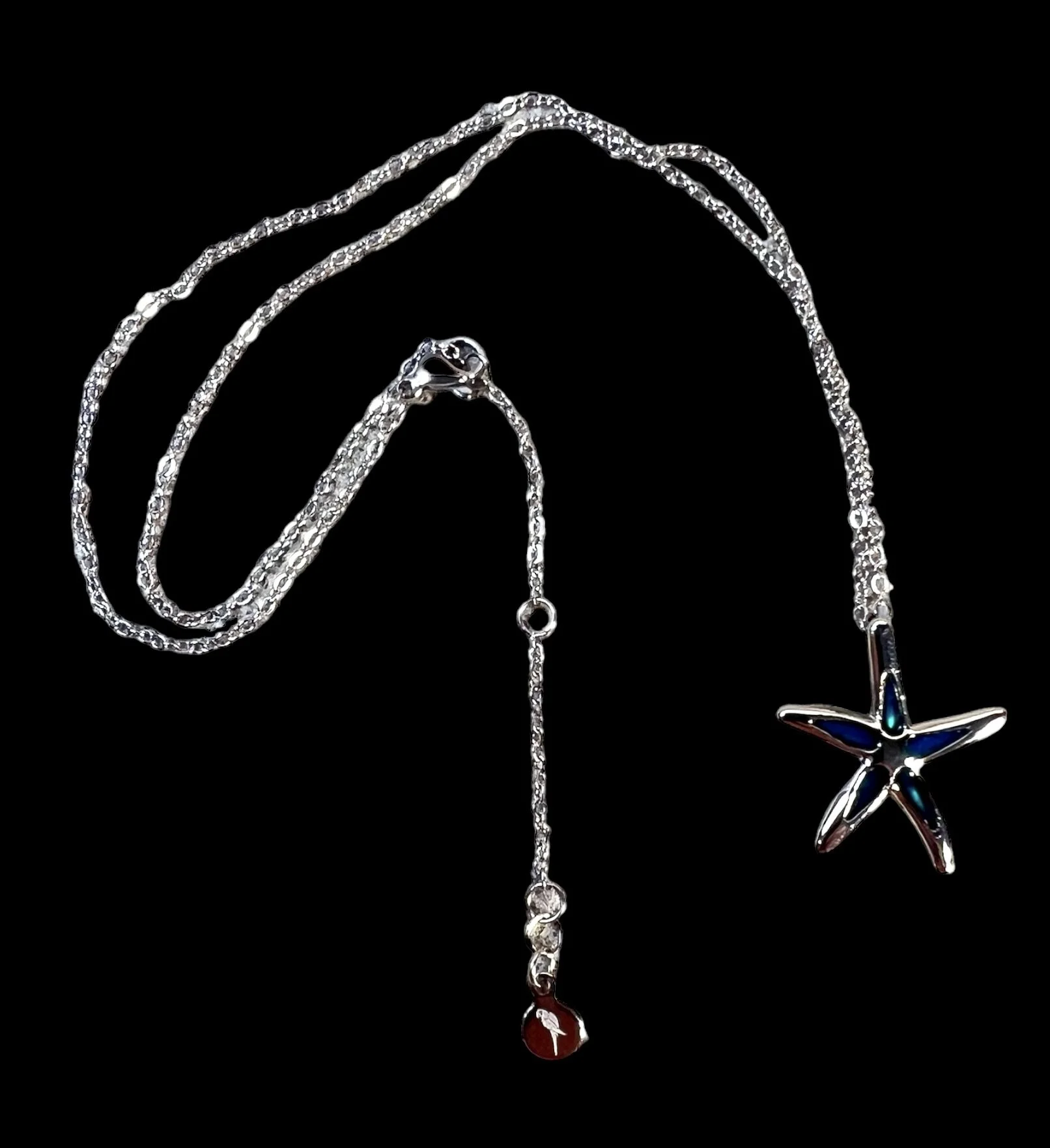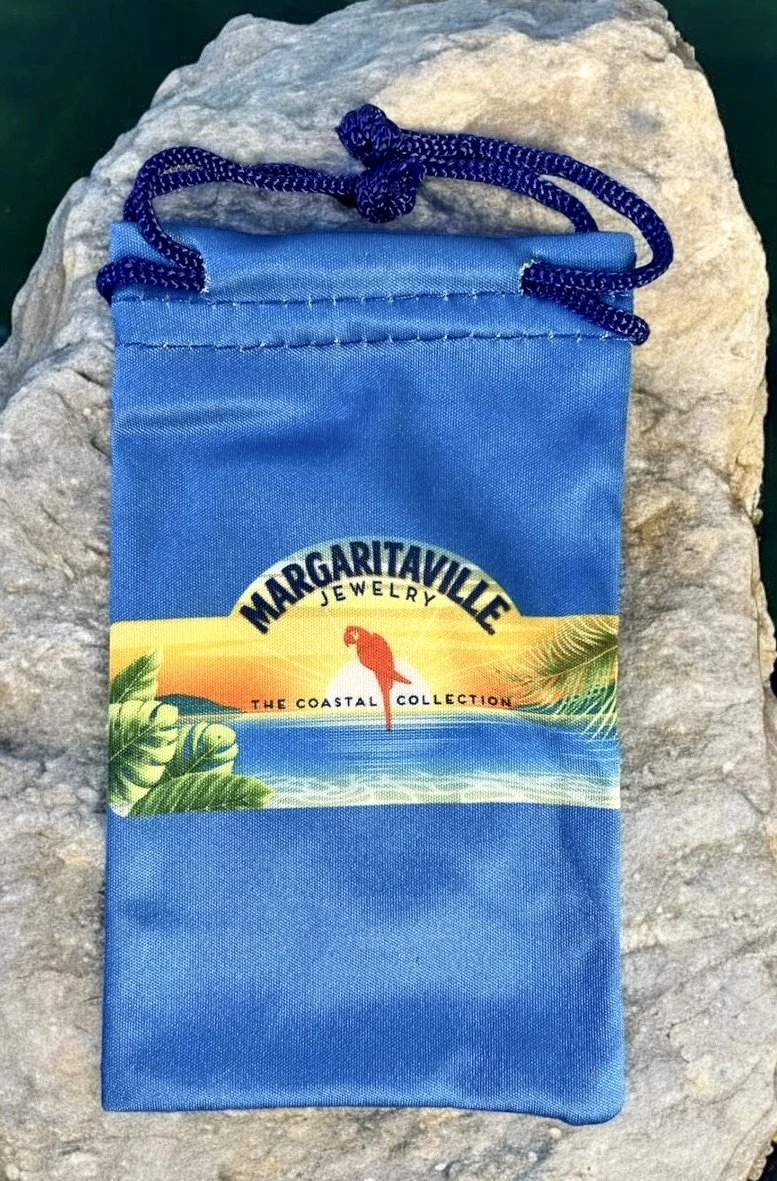 Image 1 of 5
Image 1 of 5

 Image 2 of 5
Image 2 of 5

 Image 3 of 5
Image 3 of 5

 Image 4 of 5
Image 4 of 5

 Image 5 of 5
Image 5 of 5






Margaritaville Mens "Pirate" bracelet
We couldn’t resist using that name for these bracelets and any Pirate would be proud to wear ‘em.
Multi-strand and wrapped in rope with stainless steel accent and locking clasp. The look is … well, Piratey :)
Specifications:
~ Multi-strand leather
~ Silver of Gold-tone starless accents and clasp.
~ Rope
Comes with Margaritaville Jewelry Pouch
Note: Free shipping on orders over $45.00. Orders under $45.00 will be assessed a flat-rate fee of $10.00
Pirates:
Throughout history there have been people willing to rob others transporting goods on the water. These people, known as pirates, mainly targeted ships, though some also launched attacks on coastal towns.
Many of the most famous pirates had a terrifying reputation, and they advertised this by flying gruesome flags, including the 'Jolly Roger' with its picture of skull and crossbones. Captives were famously made to ‘walk the plank’ – though this doesn’t appear to have been as common in reality as in fiction; in fact, it's likely that most victims of piracy were just thrown overboard.
Pirates have existed since ancient times – they threatened the trading routes of ancient Greece, and seized cargoes of grain and olive oil from Roman ships. The most far-reaching pirates in early medieval Europe were the Vikings.
Thousands of pirates were active between 1650 and 1720, and these years are sometimes known as the 'Golden Age’ of piracy. Famous pirates from this period include Henry Morgan, William 'Captain' Kidd, 'Calico' Jack Rackham, Bartholomew Roberts and the fearsome Blackbeard (Edward Teach). Though this Golden Age came to an end in the 18th century, piracy still exists today in some parts of the world, especially the South China Seas.
Pirates of the Caribbean:
The explorer Christopher Columbus established contact between Europe and the lands that were later named America at the end of the 15th century. As he was working for the Spanish monarchy, these 'new lands' were claimed by the Spanish, who soon discovered them to be a rich source of silver, gold and gems.
From the 16th century, large Spanish ships, called galleons, began to sail back to Europe, loaded with precious cargoes that pirates found impossible to resist. So many pirate attacks were made that galleons were forced to sail together in fleets with armed vessels for protection. As Spanish settlers set up new towns on Caribbean islands and the American mainland, these too came under pirate attack.
Read more Royal Museum
We couldn’t resist using that name for these bracelets and any Pirate would be proud to wear ‘em.
Multi-strand and wrapped in rope with stainless steel accent and locking clasp. The look is … well, Piratey :)
Specifications:
~ Multi-strand leather
~ Silver of Gold-tone starless accents and clasp.
~ Rope
Comes with Margaritaville Jewelry Pouch
Note: Free shipping on orders over $45.00. Orders under $45.00 will be assessed a flat-rate fee of $10.00
Pirates:
Throughout history there have been people willing to rob others transporting goods on the water. These people, known as pirates, mainly targeted ships, though some also launched attacks on coastal towns.
Many of the most famous pirates had a terrifying reputation, and they advertised this by flying gruesome flags, including the 'Jolly Roger' with its picture of skull and crossbones. Captives were famously made to ‘walk the plank’ – though this doesn’t appear to have been as common in reality as in fiction; in fact, it's likely that most victims of piracy were just thrown overboard.
Pirates have existed since ancient times – they threatened the trading routes of ancient Greece, and seized cargoes of grain and olive oil from Roman ships. The most far-reaching pirates in early medieval Europe were the Vikings.
Thousands of pirates were active between 1650 and 1720, and these years are sometimes known as the 'Golden Age’ of piracy. Famous pirates from this period include Henry Morgan, William 'Captain' Kidd, 'Calico' Jack Rackham, Bartholomew Roberts and the fearsome Blackbeard (Edward Teach). Though this Golden Age came to an end in the 18th century, piracy still exists today in some parts of the world, especially the South China Seas.
Pirates of the Caribbean:
The explorer Christopher Columbus established contact between Europe and the lands that were later named America at the end of the 15th century. As he was working for the Spanish monarchy, these 'new lands' were claimed by the Spanish, who soon discovered them to be a rich source of silver, gold and gems.
From the 16th century, large Spanish ships, called galleons, began to sail back to Europe, loaded with precious cargoes that pirates found impossible to resist. So many pirate attacks were made that galleons were forced to sail together in fleets with armed vessels for protection. As Spanish settlers set up new towns on Caribbean islands and the American mainland, these too came under pirate attack.
Read more Royal Museum
We couldn’t resist using that name for these bracelets and any Pirate would be proud to wear ‘em.
Multi-strand and wrapped in rope with stainless steel accent and locking clasp. The look is … well, Piratey :)
Specifications:
~ Multi-strand leather
~ Silver of Gold-tone starless accents and clasp.
~ Rope
Comes with Margaritaville Jewelry Pouch
Note: Free shipping on orders over $45.00. Orders under $45.00 will be assessed a flat-rate fee of $10.00
Pirates:
Throughout history there have been people willing to rob others transporting goods on the water. These people, known as pirates, mainly targeted ships, though some also launched attacks on coastal towns.
Many of the most famous pirates had a terrifying reputation, and they advertised this by flying gruesome flags, including the 'Jolly Roger' with its picture of skull and crossbones. Captives were famously made to ‘walk the plank’ – though this doesn’t appear to have been as common in reality as in fiction; in fact, it's likely that most victims of piracy were just thrown overboard.
Pirates have existed since ancient times – they threatened the trading routes of ancient Greece, and seized cargoes of grain and olive oil from Roman ships. The most far-reaching pirates in early medieval Europe were the Vikings.
Thousands of pirates were active between 1650 and 1720, and these years are sometimes known as the 'Golden Age’ of piracy. Famous pirates from this period include Henry Morgan, William 'Captain' Kidd, 'Calico' Jack Rackham, Bartholomew Roberts and the fearsome Blackbeard (Edward Teach). Though this Golden Age came to an end in the 18th century, piracy still exists today in some parts of the world, especially the South China Seas.
Pirates of the Caribbean:
The explorer Christopher Columbus established contact between Europe and the lands that were later named America at the end of the 15th century. As he was working for the Spanish monarchy, these 'new lands' were claimed by the Spanish, who soon discovered them to be a rich source of silver, gold and gems.
From the 16th century, large Spanish ships, called galleons, began to sail back to Europe, loaded with precious cargoes that pirates found impossible to resist. So many pirate attacks were made that galleons were forced to sail together in fleets with armed vessels for protection. As Spanish settlers set up new towns on Caribbean islands and the American mainland, these too came under pirate attack.
Read more Royal Museum














